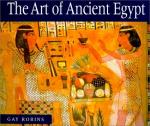|
This section contains 775 words (approx. 3 pages at 300 words per page) |

|
Drawn Figures.
The great majority of the evidence for dance in ancient Egypt comes from visual art. As early as the Nagada II Period (3500–3300 B.C.E.), sculptures and paintings on pots represented dancers. In the Fifth and Sixth Dynasties (2500–2170 B.C.E.), relief sculpture in mastaba tombs included scenes of dance. The artists who decorated many New Kingdom Theban tombs (1539–1075 B.C.E.) included dancers in banquet scenes. When artists represented dancers, the rules, or canon, of Egyptian art used to depict the tomb owner and his or her family did not apply for the following reason. The canon for artistic representation was in place because the deceased and his or her family needed to be depicted in a very specific way in order to activate the magic that transported them to the next world. Dancers depicted in the tomb, however...
|
This section contains 775 words (approx. 3 pages at 300 words per page) |

|




